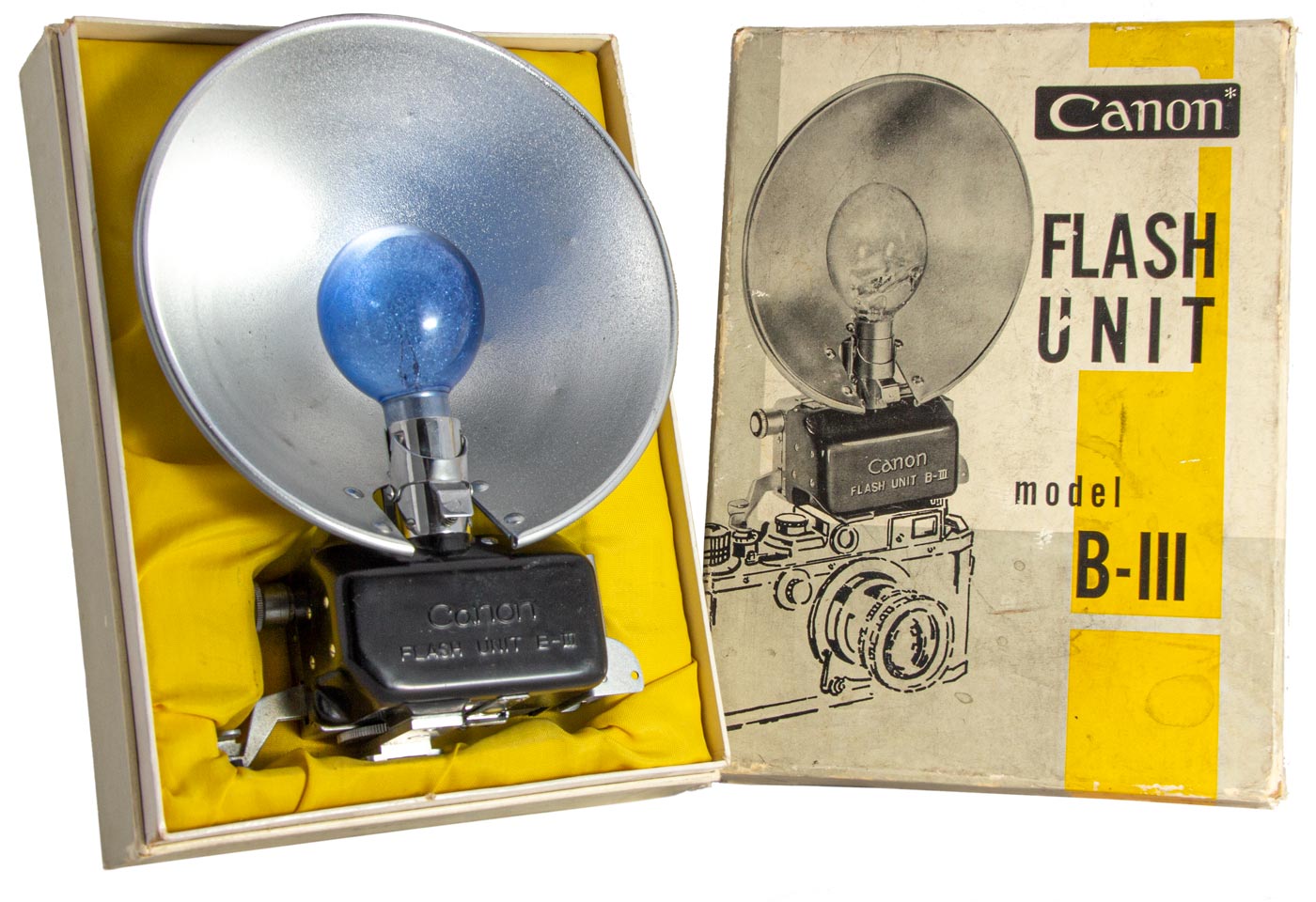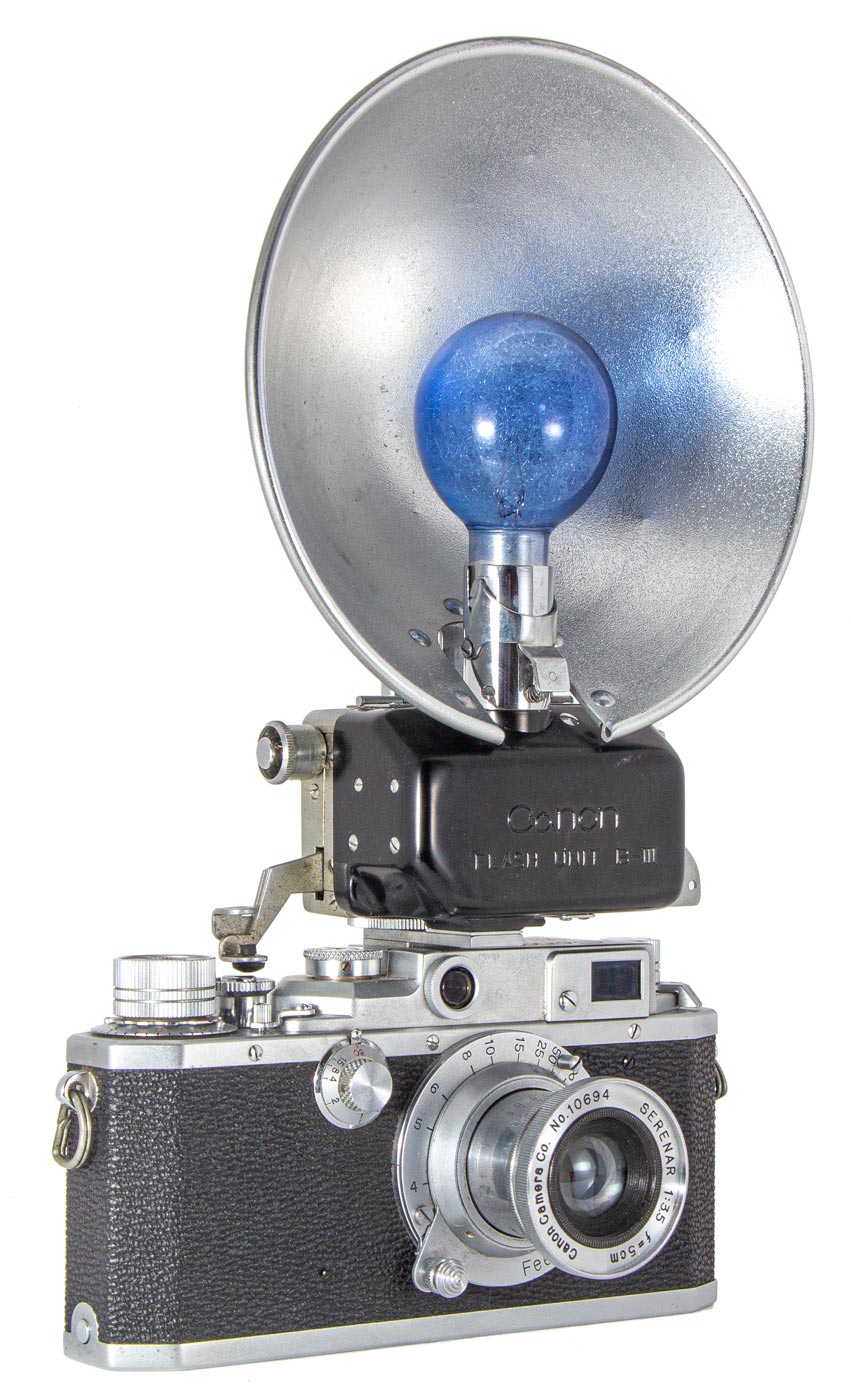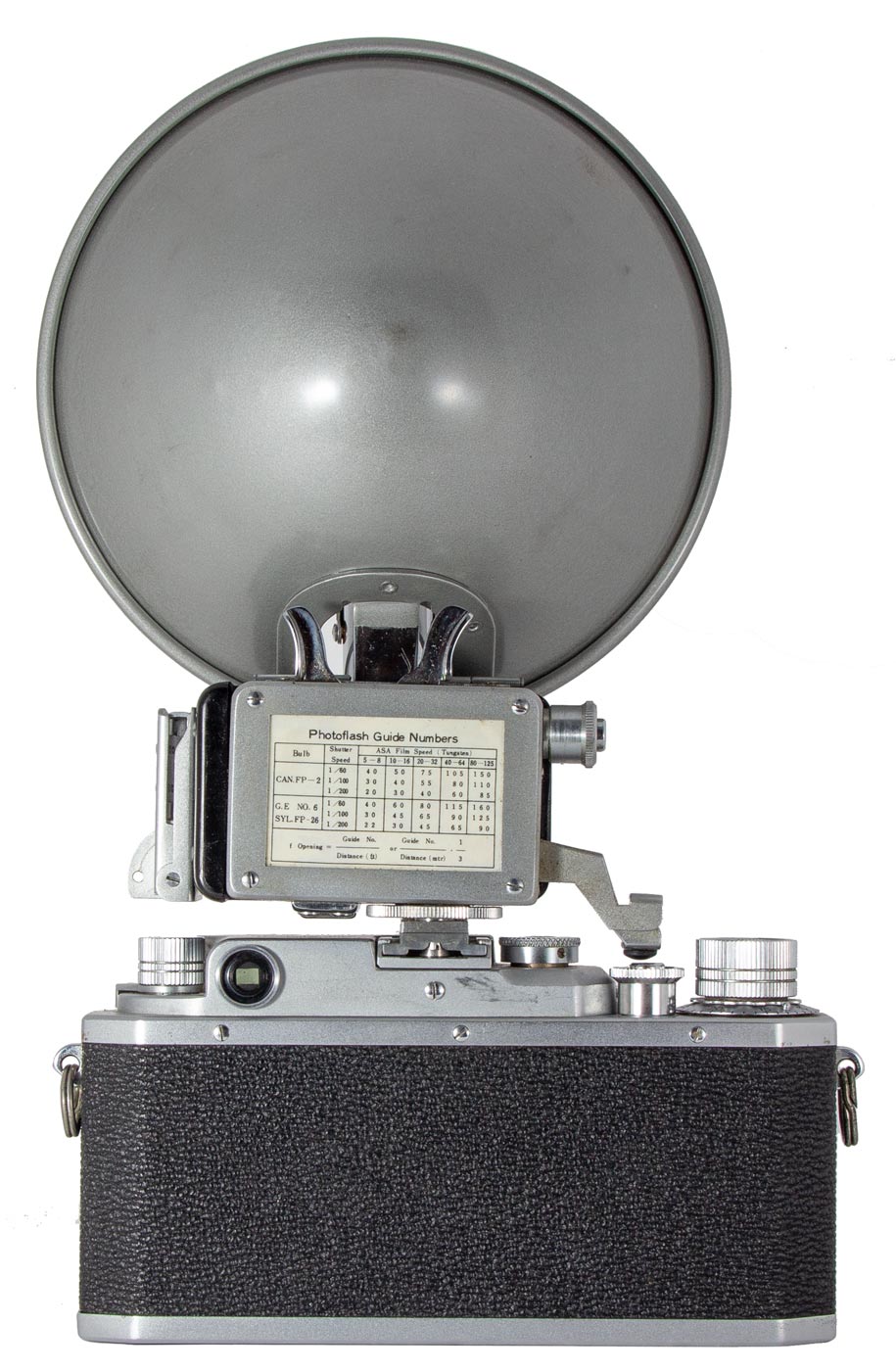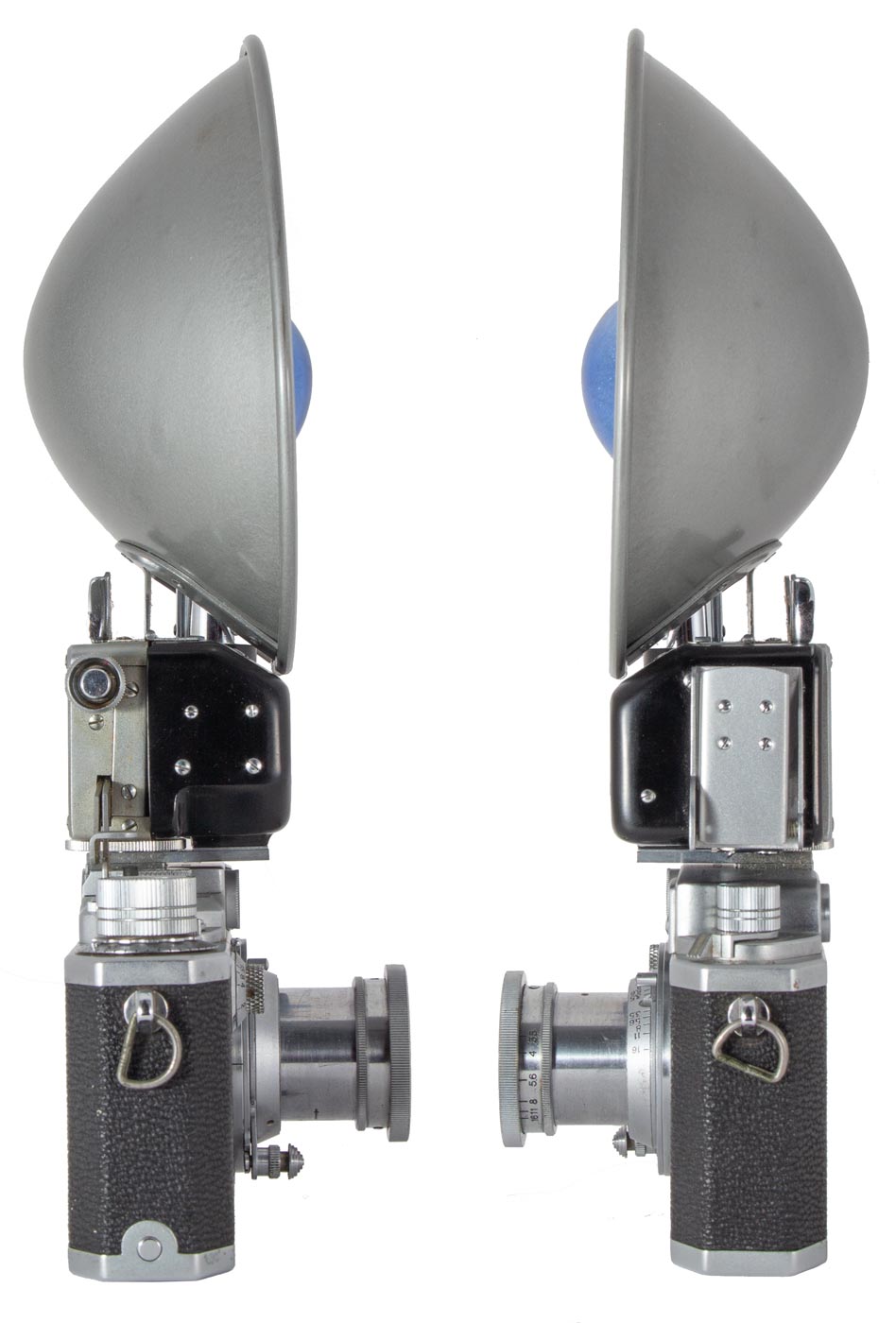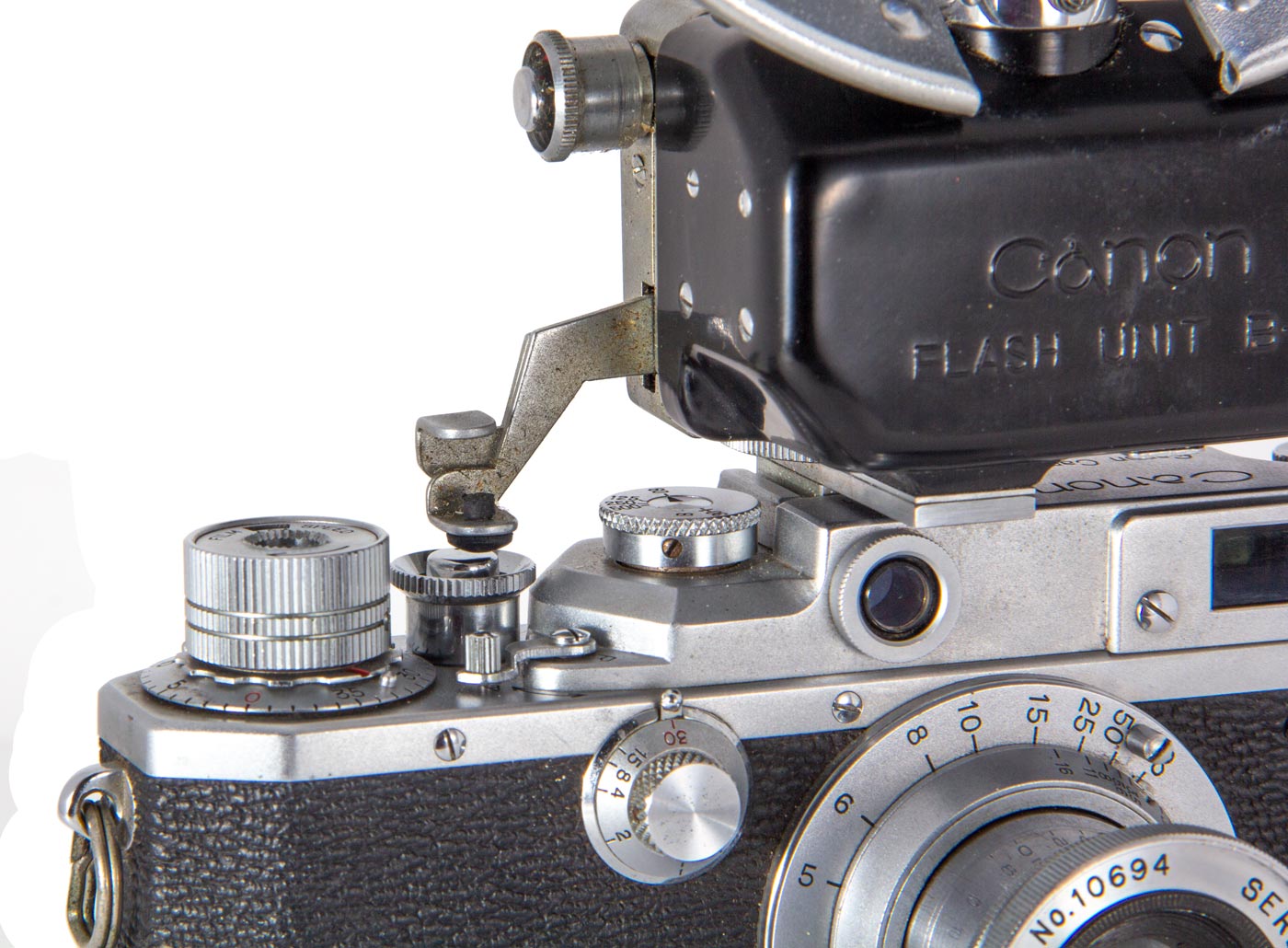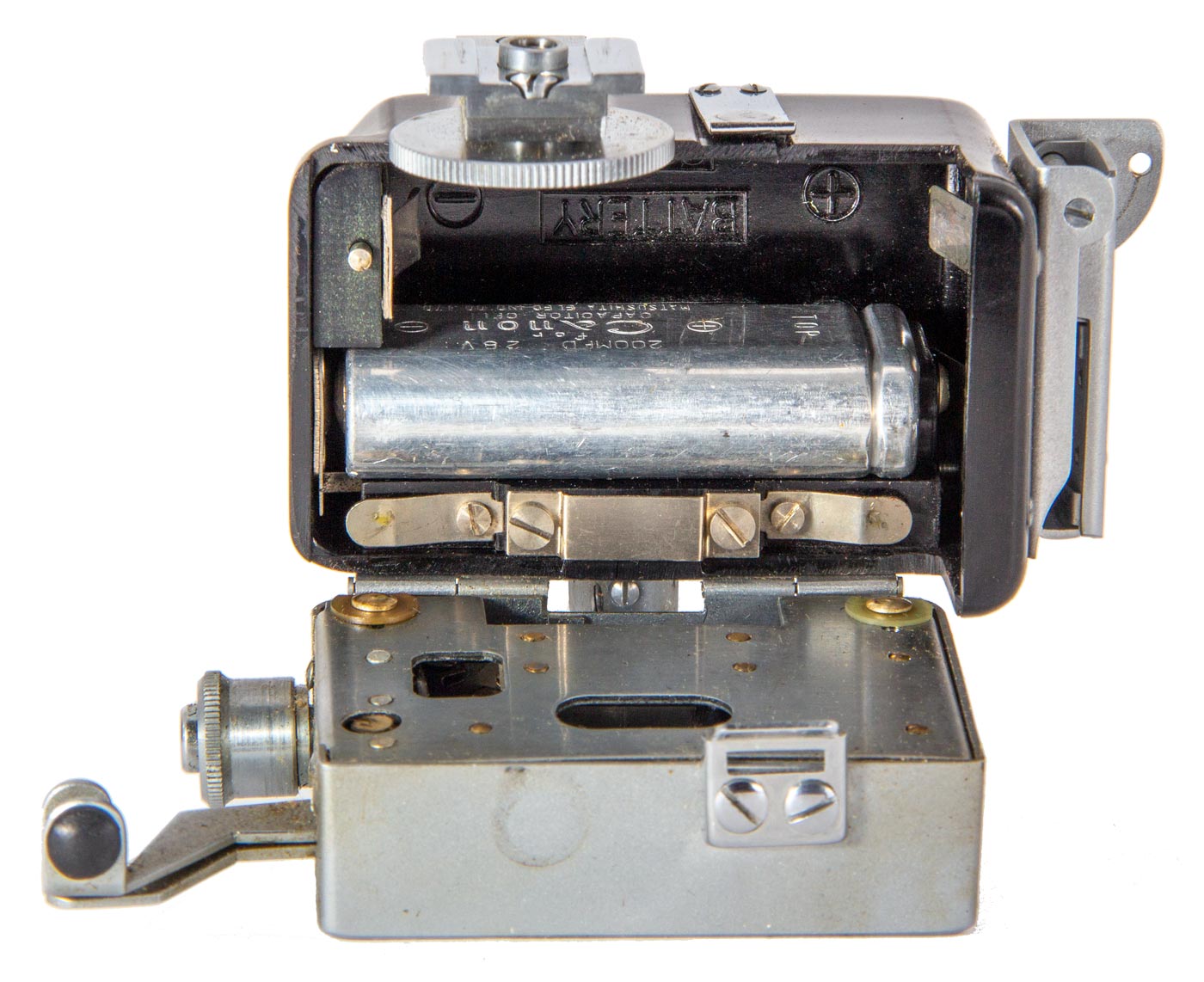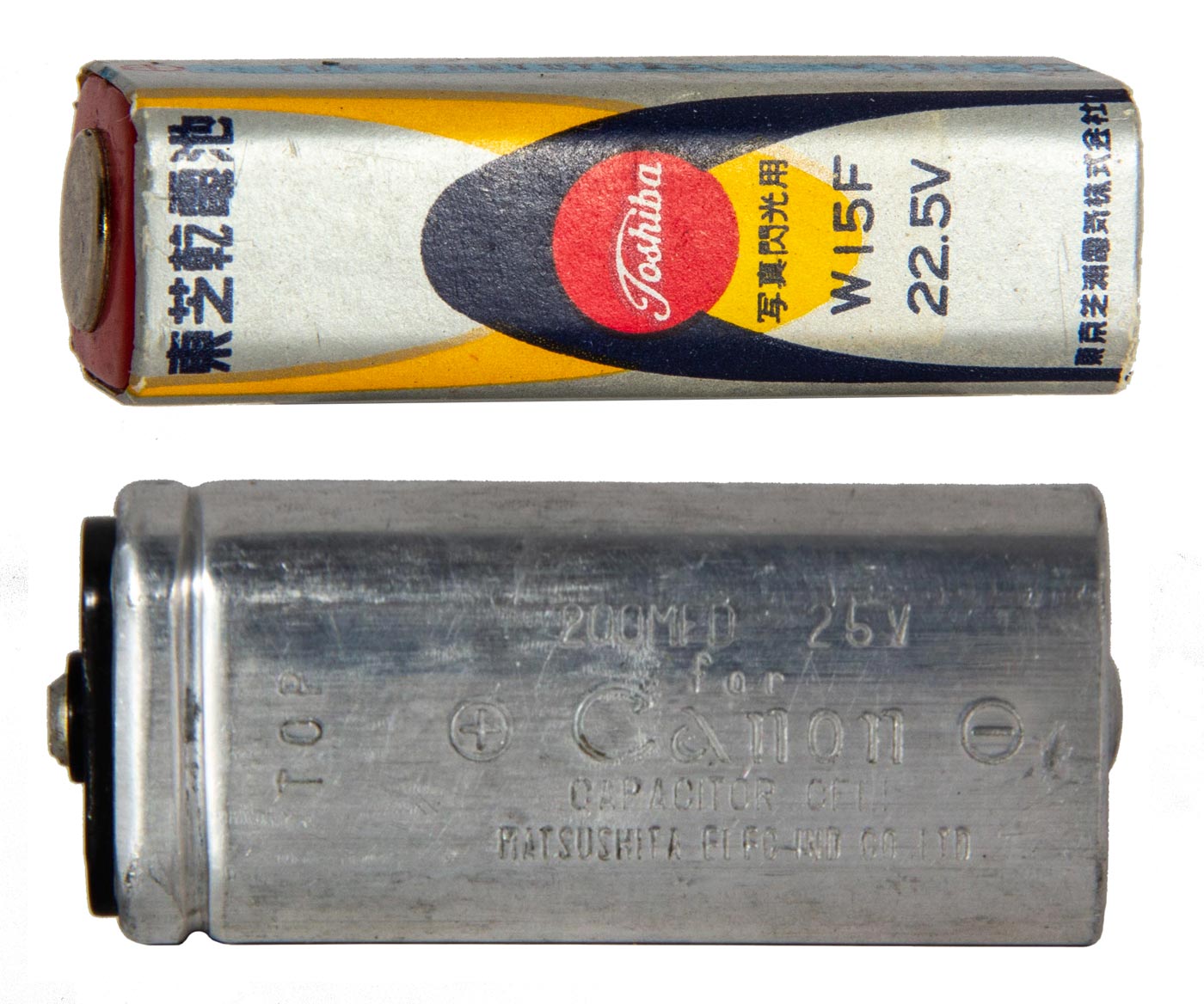The Flash Unit B-III came in a fitted satin lined box. It mounted in the camera equipment shoe and, when activated, it fired the bulb and triggered the camera.
Canon Flash Unit B-III
Not all Canon rangefinder cameras were synchronized for flash bulbs. This was one of the features left out of the less expensive models to keep their cost down. We are talking of cameras such as the Model S-II, IIB, or III.
The Flash Unit B-III allowed these unsynchronized cameras to use flash bulbs. Actually, any of the early rangefinder cameras could use this unit. And it is a very clever device.
Basically it functions this way. You cock the spring powered mechanism and wind the camera. On the right side two
levers stand out over the shutter button. one lever has a tab over top of the other. You press the top tab and it releases the spring which hammers the other lever down on the shutter button while firing the flash bulb.
So what bulb does it take? I don’t have a Manual for the B-III and have not been able to find one on line. However, on the back of the Flash Unit is a chart of guide numbers and it refers to Sylvania FP26 and GE #6 flash bulbs (these two are equivalent products). The chart gives guide numbers for shutter speeds of 1/60th, 1/100th and 1/200th. These are FP flash bulbs with long level maximum illumination which allows higher shutter speeds and is tolerant of different cameras.
The body of the B-III opens revealing a battery compartment with space for a battery and a capacitor,
The battery charges the capacitor so that when the bulb is fired there is a large reservoir of electrical charge to surge through the bulb to give very positive ignition. The capacitor is interesting as it is a drop in item like a battery with positive and negative terminals on the ends.
Inside the battery compartment are the words “22.5 V Battery”. The correct battery appears to be the Toshiba W15F which has that voltage and fits snugly into the compartment.
In this image you can plainly see the test button at the top of the image and below it the two arms that extend out over the shutter button. Pressing the top tab releases the bottom tab with the rubber bumper to slam down on the shutter button.
Here the B-III is open showing the battery compartment. The capacitor is shown in place and the battery, which is not shown, fits in the space above it.
In the picture on the left above, over the two levers coming out of the Unit over the shutter button, there is another button in a collar that looks just like a shutter button. In fact it is a shutter button! However, just like on a camera, the collar screws off and a self timer can be threaded on so that the Flash Unit can be triggered remotely. Neat!
And that is the Flash Unit B-III. I have time or inclination to actually try it out. I have no idea where to find a good W15F battery (mine is long dead). I can’t even find a reference to it. But it looks great on the shelf with the Collection!
This website is the work of R. Flynn Marr who is solely responsible for its contents which are subject to his claim of copyright. User Manuals, Brochures and Advertising Materials of Canon and other manufacturers available on this site are subject to the copyright claims and are the property of Canon and other manufacturers and they are offered here for personal use only.

